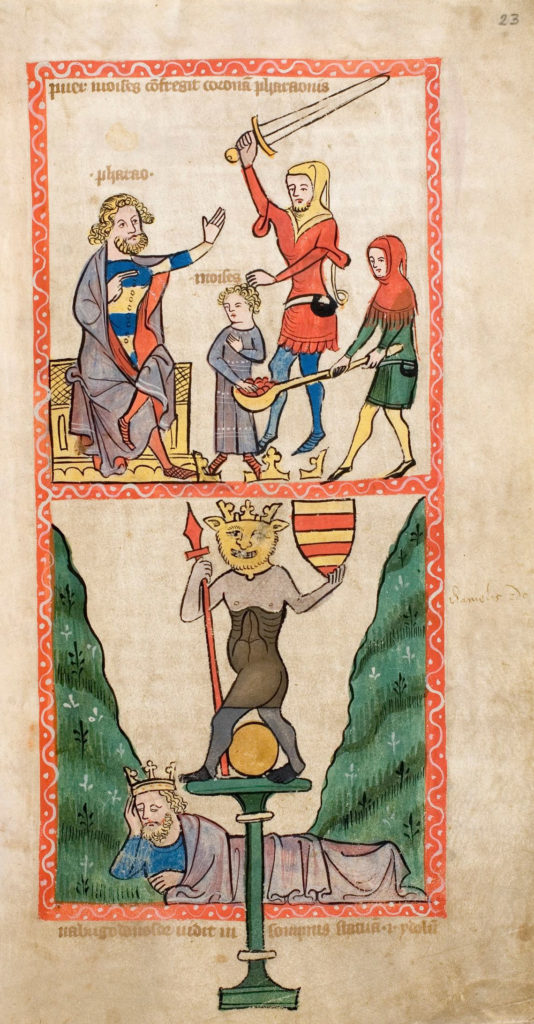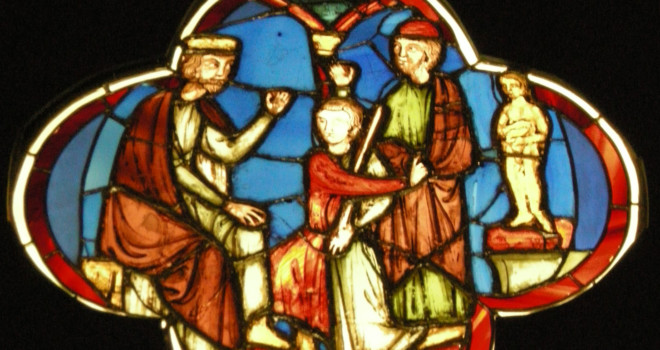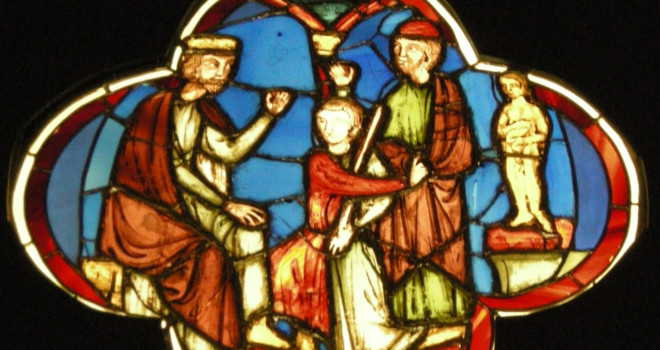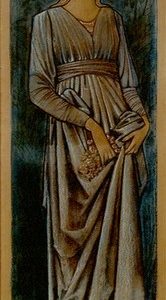Every Sunday at Mass, we confess that Jesus died and rose again “in accordance with the Scriptures,” and most of us understand this to mean that the Old Testament prophesied Jesus’ death and resurrection. That is true, as various Israelite prophets did foretell Jesus’ saving acts from Good Friday to Easter Sunday, but that is not all they prophesied. They didn’t just say what would happen. One of them also told us when this salvation would come.
I’m talking about the prophet Daniel. His book recounts his experiences while exiled in Babylon, and during his time there, he received prophetic visions and interpreted visions that other people were given. Much like the book of Revelation in the New Testament, Daniel contains a lot of fantastical imagery and perplexing symbolism, so its visions can be difficult to understand. But it is not impossible. If we read them carefully and with an eye towards subsequent world history, we can see that two of them provide important confirmation of the truth of our faith by telling us when God’s promised salvation would finally come.
The First Vision
Early on in the book, the king of Babylon, Nebuchadnezzar, has a strange dream that only Daniel is able to interpret (Daniel 2:31-35). The king dreams about an image with four parts: 1) a head of gold, 2) a chest and arms of silver, 3) a belly and thighs of bronze, and 4) legs of iron with feet made partly from iron and partly from clay. Next, he sees a stone hit the image, shatter it to pieces, and then grow to encompass the entire world.
Daniel explains that this dream foretells a succession of kingdoms that will rule the known world. Each part of the image is a human kingdom, and the stone at the end is the kingdom of God, which will last forever (Daniel 2:36-45). Daniel also tells Nebuchadnezzar that his own kingdom, Babylon, is the first one (Daniel 2:37-38), but he doesn’t say what the other three human kingdoms are.
The Four Human Kingdoms
However, if we know our history, we can figure that out by ourselves. After Babylon, the next major empire that ruled the Middle East was Medo-Persia, and then came Greece, and after that came Rome. So according to this prophetic book, God’s kingdom was supposed to come when the known world was ruled by the Roman Empire.
But there is a problem here. Most modern scholars believe Daniel was written during the reign of the Greeks, so they split Medo-Persia in two and say that Media and Persia were the second and third kingdoms. That way, they can make Greece the final kingdom and then understand this vision to predict the arrival of God’s salvation soon after the book’s composition.
So how do we decide between these conflicting interpretations of Nebuchadnezzar’s dream? Should we count Media and Persia as two kingdoms or one? As with any difficult passage in Scripture, we have to interpret this one in context, and throughout Daniel, Medo-Persia is always considered a single entity. Consider these passages:
“[Y]our kingdom is divided and given to the Medes and Persians.” (Daniel 5:28)
“Now, O king, establish the interdict and sign the document, so that it cannot be changed, according to the law of the Medes and the Persians, which cannot be revoked.” (Daniel 6:8)

So in the context of the entire book, it is clear that Medo-Persia counts as one kingdom. This means that the third kingdom is Greece, and then the fourth is Rome, so we can confidently say that Daniel does in fact foretell the arrival of God’s kingdom during the Roman Empire.
The Arrival of the Kingdom
And if we know our New Testament, that’s really significant. Jesus was born during the reign of Caesar Augustus, emperor of Rome (Luke 2:1), and he preached “the kingdom of God” (Mark 1:14-15). On top of that, Jesus also said that this kingdom would start out small and then grow larger (Matthew 13:31-33), just like Daniel said that the kingdom of God would start out small and then grow to encompass the entire world (Daniel 2:35).
So it is clear that the kingdom Jesus preached was the same one Daniel foretold, and it came exactly when Daniel said it would, during the fourth kingdom of Nebuchadnezzar’s vision. But that’s not all. Like I said, there are two prophecies in Daniel that foretell the timing of God’s salvation, and the second one is just as important as the first.
The Second Vision
A few chapters later, Daniel himself has a dream, and this one is very similar to the one Nebuchadnezzar had. Daniel dreams about a succession of four beasts, and then he sees God judge them and give rulership of the world over to “one like a son of man” (Daniel 7:1-14). Just like in the first prophecy, these four beasts represent four human kingdoms, and the kingdom ruled by “one like a son of man” is the everlasting kingdom of God and his people (Daniel 7:15-27).
We already talked about what these four human kingdoms are, so we don’t need to go over them again. However, we do need to look at some important details in this vision that help us identify them with greater certainty. In particular, if we compare this vision to another passage in Daniel, we find further confirmation that Medo-Persia does in fact count as a single kingdom, not two, so the fourth and final kingdom really is Rome.
The Ram and the Goat
In the very next chapter, Daniel sees a vision of a ram and a goat running into each other (Daniel 8:1-14), and the angel Gabriel tells him what it means. Gabriel explains that the ram represents “the kings of Media and Persia” (Daniel 8:20), and the goat is “the king of Greece” (Daniel 8:21). Interestingly, these two animals have some striking similarities to the second and third beasts from the previous chapter:
- The second beast is “raised up on one side” (Daniel 7:5), and the ram in this chapter “had two horns; and both horns were high, but one was higher than the other” (Daniel 8:3).
- The third beast had “four wings of a bird” (presumably so it could fly) and “four heads” (Daniel 7:6), and the goat in this vision flies and has four horns (Daniel 8:5, 8).
These similarities are pretty obvious, so it is clear that this vision is actually about the same kingdoms represented by the second and third beasts from Daniel’s dream. This is significant because we know what the animals in this vision represent, so we can use them to confirm what the beasts in Daniel’s dream represent as well.
The ram in this chapter is Medo-Persia, so the second beast in Daniel’s dream must also be Medo-Persia. Likewise, since the goat in this chapter is Greece, the third beast in Daniel’s dream must be Greece as well. This confirms for us that the fourth best really is Rome, and as we saw before, Jesus was born, died, and rose again during the reign of the Roman Empire.
The Son of Man
And in case there is any doubt that the kingdom Jesus preached really is the one Daniel foretold, we can look at one final point of contact between Daniel and the Gospels. Throughout his ministry, Jesus often referred to himself as “son of man” (for example, Matthew 9:6, Mark 2:28, Luke 9:22, John 3:14), and many modern readers are puzzled by this title.
But if we know Daniel, it makes perfect sense. Remember, in Daniel’s prophetic dream, the kingdom of God is ruled by “one like a son of man,” so when Jesus applied that phrase to himself, he was subtly telling us that he really did come to bring the kingdom prophesied by Daniel. What’s more, there are even some passages where Jesus identifies himself this way and incorporates other elements of Daniel’s dream as well. For example, let’s take a look at these two texts:
“[A]nd behold, with the clouds of heaven
there came one like a son of man…
And to him was given dominion
and glory and kingdom.” (Daniel 7:13-14)
“And then they will see the Son of man coming in clouds with great power and glory.” (Mark 13:26)
The similarity is glaring. They both talk about the “son of man” coming with the “clouds” and possessing “glory,” so the point is just about impossible to miss: Jesus is the “son of man” prophesied by Daniel, and he came to bring about the eternal kingdom of God that Daniel’s prophecies foretold.
Confirming Our Faith
When we put this all together, we can see that Jesus arrived exactly when the Old Testament said he would. Daniel foretold that God’s salvation would come when the known world was ruled by Rome, and Jesus’ birth, ministry, death, and resurrection all happened under the Roman Empire. This is incredibly significant, as it provides important confirmation of the Christian message. It helps to show that Jesus really is the fulfillment of God’s promises in the Old Testament, so we can be confident that our faith in him is well placed.
✠
image: MNMA, Daniel in front of Nabuchodonosor by Sailko / Wikimedia Commons (CC BY-SA 3.0)












